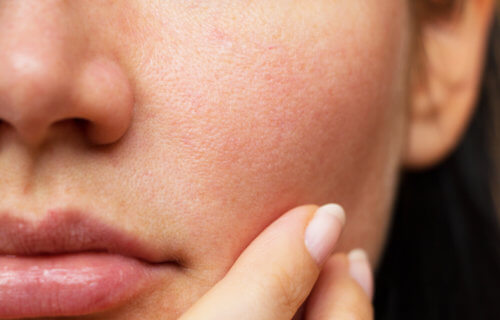MILWAUKEE — Getting rid of unwanted flab may boost your heath and your confidence, but it can also add years to your face. Doctors warn that fat loss accelerates aging by deflating the cheeks, hollowing the eyes and making the jowls look heavy.
It’s long been thought that sagging skin is simply the result of gravity taking its toll in later years. But now researchers say the appearance that some refer to as “diet face” has plenty to do with the loss of facial fat. The discovery could even lead to better facelifts. It explains why a host of celebrities, such as Simon Cowell, Renee Zellweger, and Celine Dion, look up to a decade older after they trimmed down.
The findings are based on middle-aged people who underwent CT (computed tomography) head scans on two occasions at least a decade apart. Facial fat reduced by more than 12 percent over the period. It confirms the “volume loss” theory of facial aging, shedding fresh light on why patients seek rejuvenation.
“In particular, we think deep facial fat loss removes support from the overlying fat,” says lead author Dr. Aaron Morgan, of the Medical College of Wisconsin, in a statement. “That causes deepening of the nasolabial fold, which runs from the nose to the mouth. Meanwhile, fat loss closer to the surface makes the cheeks appear deflated.”
It means the jowls descend and you lose definition around the jawline. Volume loss around the eyes means they may look hollow and sunken.
“The upper face has less fat to begin with, so fat loss is more apparent,” says Morgan. “In contrast, the cheek or buccal area has relatively little fat loss, so that area appears fuller as changes occur in other areas of the midface.”
How ‘midface fat’ can influence appearance
The 19 participants, who averaged 46 and 57 years of age at each scan, were not undergoing facelifts or any other cosmetic procedure. But it enabled researchers to measure changes in fat deposits in the area between the eyes and mouth. Although the results varied among individuals, they showed “definite and measurable loss of midface fat volume.”
It decreased from about 46.50 cc (cubic centimeters) at the initial scan to 40.8 cc at the follow-up, a fall of about 12.2 percent. But the amount wasn’t the same at all levels. In the superficial compartment, just under the surface, it fell by an average of 11.3 percent, compared to 18.4 percent less deep below the skin.
The study, published in the journal Plastic and Reconstructive Surgery, shows fat is effectively the scaffolding that holds the face up. It could identify techniques to replace or reposition the midface fat in a more “physiologic” way.
“We think our findings will help plastic surgeons design more natural approaches to facial rejuvenation, with the aim of recreating the facial fat distribution of youth,” says Morgan. “This proves there is volume depletion and not just laxity of tissues with aging. So, volume replacement should be used in addition to surgical procedures to attempt to recreate the youthful face.”
‘Real culprit behind facial aging is loss of fat’
The study concludes that the traditional theory of facial sagging due to gravity isn’t entirely correct. While the idea that weakening ligaments in the midface could result in soft tissue descent still has merit, the evidence points in another direction.
“Perhaps the real culprit behind facial aging is the loss of fat, both near the surface of the skin and in deeper areas,” contends Morgan.
So instead of moving ahead with a diet that could lead to dramatic fat loss, experts advise people to lose weight gradually. They say it’s best to consume plenty of Omega 3 fats, fruit and vegetables as well as key vitamins.
SWNS writer Mark Waghorn contributed to this report.
